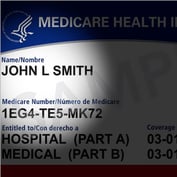Managers of some state-based Patient Protection and Affordable Care Act (PPACA) public exchanges are still trying to forge ahead, on their own, without running into the arms of HealthCare.gov.
As storm clouds gather outside the exchange system, at the U.S. Supreme Court, and at the federal offices in charge of the PPACA health insurance company lifeboat programs, the managers are trying to pay producers, resolve squabbles between producers, deal with legislative interference, and get consumers covered.
For a look at some of what exchange boards have been talking about this month, read on.

1. Covered California
Peter Lee, who has hung on as Covered California’s executive director since the beginning, says in a board meeting report that the exchange had 13,414 certified insurance agents and 5,148 certified enrollment counselors on June 11.
The number of agents has increased 8.4 percent since June 2014. The number of certified enrollment counselors has dropped 13 percent.
Covered California has made some progress with resolving problems with paying agent commissions, Lee says.
He says the exchange has paid commissions on policies sold from January 2014 through September 2014, and has submitted the commission payment requests for October 2014 through December 2014 to the state controller’s office.
The exchange is now processing or is about to process agent commissions for January 2015 through April 2015, Lee says.
Over the past few years, agents in California and other states have complained about a sense that nonprofit enrollers have been trying to crowd them out, or that exchange managers have favored the nonprofit enrollers over the licensed agents.
This month, Peter Manzo, president of United Ways of California, is saying that agents have caused problems for the nonprofit enrollers.
United Ways, an organization that has received some of the Navigator grant money flowing to nonprofit organizations, has more responsibilities than agents necessarily have, because it is legally required to help consumers with post-enrollment problems, use of coverage and technical problems, Manzo writes.
But the nonprofit enrollers get paid only when consumers actually pay for their Covered California coverage, Manzo says.
“Agents generally receive more compensation per enrollment due to commissions, and yet we often assist consumers with errors or changes needed after being supported by an agent,” Manzo writes. “We continue to assist consumers who completed online enrollment themselves or sought help from an enrollment agent and subsequently need help due to system errors and application mistakes.”
Moreover, the “find a certified enroller” directory on the Covered California site does not work nearly as well as the “find a certified agent” directory, Manzo says.








 June 22, 2015 at 12:28 PM
June 22, 2015 at 12:28 PM












